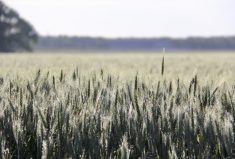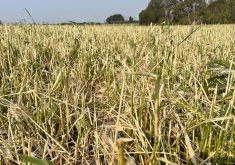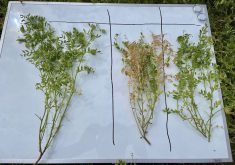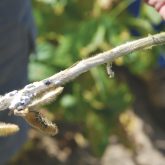Protecting crops from the ravages of fusarium is a never-ending job for investigators like Dr. Dilantha Fernando and his staff at the University of Manitoba.
The most common species of the pathogen is fusarium graminearum, commonly known as fusarium head blight (FHB) or fusarium scab. It’s a cereal crop pathogen that has become the most aggressive and prevalent species in both wheat and barley.
Fusarium not only destroys the yield in cereal crops and corn, it produces a toxin (i.e. mycotoxin) that is harmful to both humans and animals if excess mycotoxin in food or feed is ingested. Fernando says this poses a serious health problem, particularly in developing countries where corn is a staple of the daily diet and food scarcity means people may not throw away infected cobs, opting to simply cut out the damaged areas they can see. Unfortunately this isn’t always effective, since any undetected mycotoxin still clinging to the cereal has the capacity to contribute to illness.
Read Also
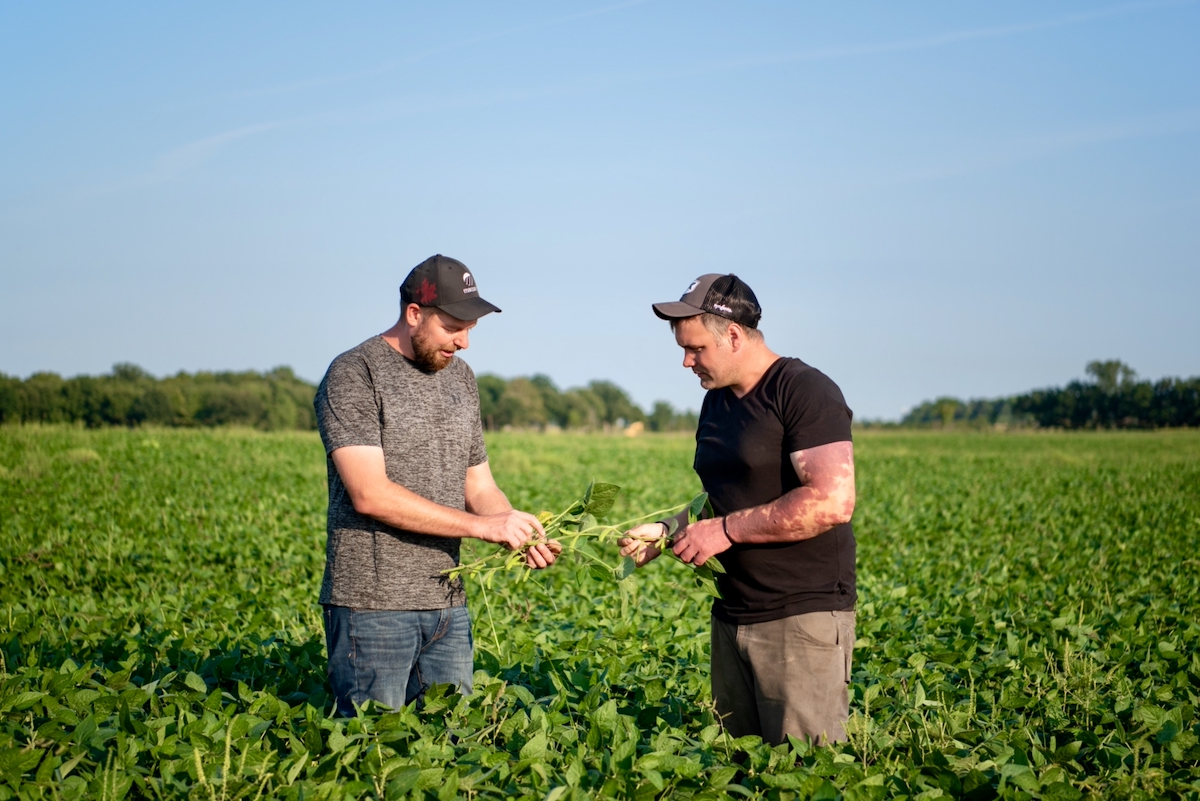
Ontario farmers partner for success
Ontario business partners, Matt Bergman and DJ Wassenaar, have been farming together for 10 years. Their focus on integrating unconventional…
Fernando and his colleagues have taken on the challenge of developing wheat varieties that have genetic resistance to the pathogen. A fusarium-resistant wheat variety will slow the spread of the pathogen, which can linger on stubble debris in the soil for several years. It will also reduce the need for repeated fungicide applications while improving crop quality.
Fernando, professor of plant pathology at U of M, says the genetic work being done there is essential in the race to control the spread of fusarium in Canada and to maintain Canada’s status as an exporter of wheat and barley globally.
“I think it is extremely urgent, mainly because the pathogen is a little bit ahead of us all the time,” Fernando says. “It keeps changing. The type of toxin it produces is changing. So, now the ones we’re experiencing are a little bit more potent, more aggressive, and at times causing more disease.
“It seems like they know what we are doing and they are just one step ahead of us,” Fernando adds. “We always see something new happening.”
That means the pressure is on in the small lab where Fernando and the graduate and undergraduate students under his supervision study the DNA of wheat and fusarium strains in their quest to gain a better understanding of the interaction between the host plants and the pathogen.
The lab itself is different from most Canadian research labs because of the number of people working there. “Normally it’s one PhD student and one master’s student,” Fernando says. But there are 15 people working in the University of Manitoba lab —three master’s students, five PhD students, four post-doctoral scientists and a technician. And, during the summer months, three undergraduate students are also hired.
One of their current tasks is to identify a marker in a specific gene which, when transferred to an existing wheat variety, will create a plant with fusarium resistance without diminishing yield or other beneficial characteristics previously developed in Prairie wheat and barley over time.
The challenge of finding a naturally occurring resistance to fusarium is multi-faceted.
It’s not a straightforward one-gene problem, Fernando says. Transferring one gene may seem like a quick fix but along with fusarium resistance there’s a chance that less desirable traits like dwarfism (smaller plants) or lodging (weak stems) will show up as well. “In addition,” he adds, “single gene resistance to fusarium is not easy to find.”
A good way to understand the challenge is to look at television cable bundling. When you purchase a cable package you get the channels you want, but you also get some you don’t want your kids watching, so you have to do some extra work to keep those channels turned off.
According to Fernando, who has degrees in both genetics and microbiology with a special interest in genetic resistance, the best method for identifying a gene with fusarium resistance, while blocking the transfer of undesirable traits, is marker-assisted selection. This is a long process that can take many years. It requires meticulous attention to detail in the field, the greenhouse and the lab in order to produce viable results.
Fernando says researchers have a variety of sophisticated genetic protocols at their disposal to help them in their quest for a genetic solution to reducing fusarium. But, he adds, that’s another science story.
Today researchers are working at finding a minor gene with fusarium resistance. It’s an important aspect of genetic resistance research because minor genes pose the biggest challenge to the pathogen. They confuse it and slow its rate of adaptation providing a longer-lasting result.
Although it takes longer to develop a plant with a high level of fusarium resistance using marker-assisted selection and crossbreeding, once it’s there, it’s established and will provide long-term protection.
In comparison, using a single-gene approach to develop fusarium resistance in plants is a much simpler process. In this process, the whole gene is transferred without isolating the traits within it through DNA analysis. Fernando called it a “quick fix” because the desired results can be obtained relatively quickly. But the results can be overturned just as quickly if the pathogen adapts to a new host, so it may not be long before the farmer is forced to increase the number of fungicide applications in order to maintain crop quality and yield.
Reducing the incidence of fusarium through transgenic plant breeding provides environmental benefits as well as ensuring good-quality crops.
“(We’re) trying to stay away from fungicides by putting good genetics into the crop, finding solutions in a very meaningful way. Not particularly saying that we’re not applying anything, but our whole goal is to remove the fungicides from the equation with good genetics if possible… Even if you apply fungicides you still need good genetics,” Fernando says.
According to Fernando, putting fungicides on a crop that is highly susceptible to a disease is a waste of money. Good genetics with an effective fungicide is the best solution because both the frequency and cost of spraying are reduced, he said.
Not all the research occurs in the lab. PhD student Chami Amarasinghe is also working in the greenhouse identifying which fusarium graminearum strains cause the most damage to different wheat varieties. She infects different varieties of wheat with different strains of F. graminearum to try and identify the various types of mycotoxins they can produce. Her goal is to sort out which genes produce the most virulent strains of the pathogen.
Amarasinghe is also working towards identifying what other fusarium strains not yet seen in Canada might also be able to infect out wheat.
That portion of Armarasinghe’s research helps protect Canadian wheat from fusarium epidemics caused by spores hitchhiking to Canada on imports. She has received F. graminearum strains from 12 other countries including Germany, China, U.K., Switzerland, France, Australia, Mexico, Brazil, and Poland, and she is studying their effect on Canadian wheat varieties.
Armarasinghe has been working on the FHB pathogen and its toxin biosyntheses pathways since she came to Winnipeg from Sri Lanka in 2009.



